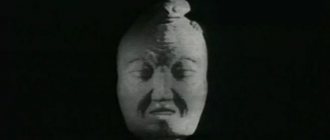Stuttering is a violation of the tempo and rhythm of speech organization, which is associated with a convulsive (contracted) state of the muscles that form speech. Stuttering is known as one of the ancient speech disorders. The essence of this condition, the mechanisms of its development, causes, symptoms and approaches to treatment differed significantly in different periods of the development of speech therapy. Different views on this problem are due to different levels of science, teachings and schools dealing with this condition. In this article we will approach this topic from the perspective of modern teachings and achievements in the field of treatment of this condition.
Stuttering is known as one of the ancient speech disorders.
Causes of stuttering
There are 2 types of causes of stuttering. The former create a predisposition, the so-called “soil” for the development of the disease. The second group of reasons are “impetuses” to development, reasons.
Predisposing reasons
A combination of one of the following unfavorable conditions and a strong irritant (stress) is enough for the development of stuttering in a child.
A lot depends on the parents. If parents have the so-called Neurotic burden, which includes infectious, neurological and other diseases that negatively affect the functions of the nervous system, then all these factors can affect the child. Infections can be transmitted, and increased irritability can negatively affect the child’s mental state.
A lot depends on the parents.
When we evaluate developmental causes, it is important to look back to the period before, during and after childbirth. It is necessary to study the presence of birth injuries, infections, asphyxia and other factors that may affect the functioning of the brain. It is equally important to study the child’s family, because it is likely that among his blood relatives there may be people who stutter.
As for the child’s body, it is necessary to pay attention to its neurogenic characteristics and constitutional predisposition. These reasons include increased vulnerability and irritability, nightmares, enuresis, and diseases of the nervous system. Of course, we should not forget that a child may go through a stage in which age-related anatomical and physiological features of the central nervous system are present.
And of course, one of the most important things is that the child should not feel disadvantaged in the family, should not face alienation and misunderstanding on the part of the parents. It is important to ensure that the baby has enough positive emotions that he receives with his parents.
Producing causes
Quite often, stuttering develops against the background of organic (physical) diseases of the brain, which lead to disturbances in the speech-motor system.
Stuttering often develops against the background of infectious and physical diseases.
Infectious processes accompanied by the development of encephalitis and meningitis can lead to depletion of the nervous system and weaken the centers responsible for the movements of the speech-motor apparatus (measles, whooping cough, meningococcal infection).
Many ENT diseases (laryngitis, tonsillitis, sinusitis) lead to changes in the timbre and intonation of the voice, which also negatively affects the formation of speech.
Mental trauma accompanied by severe fear or fright.
A significant reason is inadequate upbringing of the child. This may include increased demands from the child in learning, the formation of the phenomenon of “exemplary” behavior.
Negative, negative attitude of parents towards the child (severity, anger, strictness).
An equally important reason is the child’s unexpected shock, which can be both positive and negative (“excessive” excitement, stressful situations at school, stressful situations in the family).
Simultaneous acquisition of different languages at an early age causes stuttering, usually in one language
In the case of a child learning several languages at an early age, which leads to increased load on various centers of the brain.
Imitating people who stutter.
Stuttering. Correction of stuttering. Article on speech therapy on the topic
Stuttering. Correction of stuttering.
Stuttering is a violation of the tempo-rhythmic organization of speech, caused by the convulsive state of the muscles of the speech apparatus.
The basis of stuttering is the convulsive state of the muscles of the speech apparatus. This condition occurs as a result of disruption of nervous processes. As a result, the transmission of nerve impulses in various parts of the brain is interrupted. When the area of the brain responsible for producing speech is involved in the zone, convulsions occur in various parts of the speech apparatus. Thus, cramps can develop in the muscles of the larynx, pharynx, tongue and palate. The result of these convulsions is the asynchronous firing of speech components - some fire earlier, others later. The vocal cords begin to close tightly and also open, the tempo and fluency of speech is disrupted. Syllables or sounds begin to repeat, pronounced at length and in a whisper, for example, “ppp-field”, “mmma-aaa-tire” and so on. It is noteworthy that the nerve impulses that arise during overexcitation are close in frequency to consonants. That is why stuttering, as a rule, occurs on consonants and much less often on vowels.
Causes of stuttering: Based on existing ideas about the etiology of stuttering, two groups of causes can be distinguished: predisposing and producing. Moreover, some etiological factors can both contribute to the development of stuttering and directly cause it.
Producing causes of stuttering (are not congenital, but acquired as a consequence of serious stress for the body):
- Lesions of the nervous system (disturbances in the body such as brain damage, hypoxia, severe infection cannot but leave a mark on health - their consequence may be deviations in the transmission of nerve impulses from the brain to the speech apparatus);
- Diseases of the sound apparatus (when the organs responsible for sound output are directly affected - the larynx, lips, tongue, etc.);
- Psychological stress (delayed speech development can occur due to severe stress, both long-term and acute short-term).
Predisposing causes of stuttering (a set of factors that carry with them a risk of delay in the development of speech skills):
- characteristics of temperament and minor psychological deviations (a person may begin to stutter due to low resistance to stress or, for example, obsessive fears);
- gender and age (according to statistics, children are much more susceptible to stuttering, and in women it occurs three times less often than in men);
- hereditary diseases transmitted from parents;
- too early, or conversely, too late, the beginning of the development of speech skills in a child;
- learning several foreign languages at once;
- pampering and the habit of distorting words, deliberately pronouncing them incorrectly, imitating and mimicking someone else's speech.
Symptoms of stuttering:
- repetition of sounds, syllables
- stretching sounds and syllables
- pauses (blocks) of silence
The child's speech loses its smoothness and rhythm. The more nervous the child is and tries to overcome the barrier, the more pronounced the stuttering becomes. The facial muscles tense, and tension in the muscles of the limbs is also often observed.
During a conversation, disturbances in facial and articulatory motor skills attract attention. Disorders of coordination of movements of the arms and legs and dynamic praxis are also detected. During a speech therapy examination, the structure of the speech apparatus is normal, but at the same time, articulatory movements are characterized by their limitations and stiffness. Speech is also monotonous and monotonous.
Associated symptoms of stuttering include:
- anxiety;
- anxiety
- motor or vocal tics
- facial muscle tension
The child begins to exhibit avoidant behavior - he tries to avoid situations where he needs to speak out or where a large number of people simply gather. Behavior is characterized by impulsiveness, and the emotional background is characterized by lability.
The main stages of speech therapy work to overcome stuttering.
1. Creation of a protective speech regime.
2. Regulation of emotional and muscular state (relieving muscle and emotional tension). Training in relaxation skills, formulas for inducing a state of relaxation.
3. Development of motor functions. Development of word coordination and rhythmic movement.
4. Formation of phonation (speech) breathing.
5. Work on fluency of speech in its various forms. Development of intonation characteristics of speech.
6. Developing the personality of a child who stutters
An integrated approach to overcoming stuttering.
The full effect in the fight against stuttering can be achieved only if a comprehensive method is used.
Medical influence (drug strengthening of the nervous system and various types of physiotherapy), which helps to normalize the functions of the child’s nervous system and creates a favorable background for psychotherapy, for the active work of a speech therapist.
Psychotherapeutic influence, which is carried out throughout the entire correctional and developmental work.
*Speech therapy rhythm. It consists of a system of various exercises and games with movements accompanied by music or in combination with children’s speech.
*The influence of others on the personality of a stuttering child, on his relationship with the environment and on his emotional-volitional sphere, is carried out throughout the entire period of correctional and educational work.
The modern integrated approach to overcoming stuttering is understood as a therapeutic and pedagogical impact on different aspects of the psychophysical state of a stutterer using different means of correction and the efforts of different specialists. The complex of therapeutic, psychological and pedagogical measures includes medicinal drugs and procedures, physical therapy, psychotherapy, speech therapy classes, speech therapy rhythms, psychological correction classes, and educational activities. Their goal is to eliminate or weaken speech cramps and accompanying disorders of voice, breathing, motor skills and speech; healing and strengthening the nervous system and the entire body as a whole; ridding the child of the wrong attitude towards his speech defect, from psychological layers, re-education of his personality and behavior, social readaptation and adaptation of the stutterer.
The main objectives of the medical and health work carried out by the doctor are: strengthening and improving the nervous system and physical health of the stutterer; elimination and treatment of abnormalities and pathological manifestations in their psychophysical state (weakening or relieving speech cramps, disorders of the autonomic nervous system, motor impairments, etc.).
The main task of correctional pedagogical work, which is mainly carried out by a speech therapist, is the elimination of speech defects (re-education of incorrect speech) and negative personal qualities of people who stutter. The speech therapist organizes the friendly medical and pedagogical work of the necessary specialists (doctors, psychologists, educators, rhythmist, exercise therapy instructor, music worker, etc.), using their methods and means when influencing people who stutter.
Medical and health work. Therapeutic work includes: creating a favorable environment for treatment, organizing a daily routine and balanced nutrition, hardening procedures, physical therapy, drug treatment, physiotherapy and psychotherapy.
- In a specialized institution, it is necessary to create a calm and at the same time cheerful, cheerful mood for a stuttering child; distract his attention from disturbing thoughts about his defect.
- The child must maintain confidence in recovery. Systematic alternation of various types of activities, a certain rhythm of life are also important, as they contribute to the normalization and facilitation of the work of the higher parts of the nervous system and the entire organism as a whole.
- When creating a daily routine, it is important to include sufficient time for rest. To this end, it is necessary for schoolchildren to facilitate the learning process, take breaks more often when doing homework, not overload them with extracurricular and homework, etc.
- A variety of activities is important for children; it arouses their interest. For excitable and active children, activities and games are selected that are calm and quiet. Inhibited children need to be activated and their independence developed.
- In the daily routine of a stuttering preschool child, at least 10–11 hours at night and 2 hours during the day should be allocated for sleep; for schoolchildren, 8–9 hours at night and 1.5–2 hours during the day. Eating should be done no later than 1.5–2 hours before bedtime, otherwise the restoration of the strength of the nerve cells of the cerebral cortex during sleep is less intense. It is necessary to pay attention to fortifying the food of a stuttering child. Vitamins as biological catalysts of all enzyme systems have a beneficial effect on higher nervous activity, reactive forces and the immunological state of the body.
- Tempering procedures are included in the daily routine of a stuttering child. Daily walks, outdoor games, and sports activities strengthen the nervous system and create an emotional uplift. Air baths have an active effect on the cardiovascular system and normalize its functioning.
- Water procedures are important for hardening a child’s body: wiping, dousing, showering and bathing.
- Different types of hardening are prescribed by the doctor strictly individually, depending on the child’s health condition and the characteristics of local climatic conditions.
- Physical therapy and exercise, developing the muscular system, enhance the functioning of the most important vital organs - the lungs and heart, and increase metabolism. They help strengthen the child’s strength and morale, develop coordinated and precise movements, help get rid of stiffness or, conversely, disinhibition of movements, and promote discipline and composure.
- All this is a necessary prerequisite for the better functioning of the speech organs of a stuttering child and has a positive impact on the development of correct speech skills. Physical exercises for children who stutter acquire therapeutic value.
Psychological correction occupies a significant place in the treatment of stuttering. The main goal of psychotherapy is to improve the mental health of a person who stutters:
- education of a full-fledged personality;
- nurturing the correct personal attitude toward one’s own shortcomings and the social environment;
- impact on the micro-social environment.
Corrective pedagogical work with people who stutter
Correctional and educational work is given very important importance in a comprehensive method of overcoming stuttering. The speech therapist occupies a central place in this work. Currently, there are several methods of speech therapy to eliminate stuttering in children. But all of them, one way or another, are subordinate to one goal - to educate children and adults in the ability to speak in normal speech, free from stuttering.
The pedagogical part of the integrated approach is correctional pedagogical (speech therapy) work, which includes a system of speech therapy classes, educational activities, speech therapy rhythm, and work with parents.
Speech therapy work is considered as a system of correctional and pedagogical measures aimed at the harmonious formation of the child’s personality and speech, taking into account the need to overcome or compensate for his defect.
— For the development of all types of speech of stuttering children, games with singing (round dances with dance movements) are of paramount importance. They are held in almost every lesson.
— Further consolidation of the active behavior and speech of stuttering children takes place in the process of outdoor games. In outdoor games, children move with pleasure and speak in rhythm with their movements.
— Outdoor games normalize the motor skills of children who stutter: during the game they have to respond to some signals and refrain from moving during others, combine movements with the rhythm of speech.
— Didactic games are especially useful for children with general speech underdevelopment. Usually, before eliminating stuttering, a speech therapist works to correct sound pronunciation, since sometimes with the correction of incorrect pronunciation, stuttering also disappears.
— Didactic games are followed by games-dramatization of poems, prose, tabletop theater games and creative games (first at the suggestion of an adult, then according to the ideas of the children themselves).
Corrective work on the game system is carried out in several stages.
At the first stage, the teacher-speech therapist examines the state of children’s speech during activities, studies their behavior in games and when performing routine tasks, identifies the personal characteristics of each, corrects breathing, voice, develops the dynamics of the speech apparatus, and draws up an individual and joint work plan with the teacher.
The second stage is the stage of maximum speech restriction. Its goal is to slow down pathological reflexes in children to incorrect speech, accompanying movements and actions, and the use of unnecessary words. This stage includes a period of silence (3-6 days) and a period of whispered speech (10-12 days). During this time, children who stutter develop attention, perseverance, imitation, and general and manual motor skills.
At the third stage (lighter forms of speech), children develop a soft voice, unified pronunciation, expressiveness of speech, and duration of exhalation. At the same time, work is underway to instill voluntary behavior in children who stutter. At this stage, elements of creative games are introduced into classes at the suggestion of the speech therapist. Homework materials include board games, didactic games, outdoor games, and conjugate-reflective recitation of nursery rhymes, poems, excerpts from fairy tales, etc. by children together with their parents.
At the fourth stage, the speech therapist continues to work on correcting the behavior and speech of children who stutter. The selection of games can be very different: games with singing, didactic, active games with rules, dramatization games, creative ones. A prerequisite is the observance of dialogic speech in question-and-answer form in all games.
The goal of the fifth stage is the development of independent speech. The speech therapist teacher creates a large number of game situations in which retellings of a previously prepared text are organically included.
Basic requirements for speech therapy sessions with children who stutter:
- Speech therapy classes implement the main tasks of correctional and pedagogical influence on the speech and personality of a stuttering child.
- Speech therapy classes are conducted in a certain system, sequentially, step by step, taking into account the basic didactic principles; depending on the individual characteristics of each child; based on the consciousness and activity of children. During the classes, manuals, visual and technical teaching aids are used; classes contribute to the strength of the developed skills of correct speech and behavior.
- Speech therapy classes are consistent with the requirements of education and training programs for preschool or school-age children.
- The classes provide for the need to train correct speech and behavior for children who stutter in different conditions - in the speech therapy room and outside it, in different life situations, in the presence of friends and strangers, etc. For this purpose, the whole variety of speech therapy technologies is used: various forms of work on speech development, didactic, active, role-playing and creative games, excursions, preparation and participation in matinees, concerts, performances in front of a microphone.
- Classes are organized in such a way that the child speaks them without stuttering and related disorders.
- Classes keep the child in a good mood, cheerfulness, and self-confidence.
- In classes with people who stutter, there are always examples of correct speech: from the speech therapist himself, successfully engaging children, tape and video recordings of performances by masters of artistic expression, demonstration performances by those who have previously completed a course of speech therapy classes, etc.
- Classes are conducted against the backdrop of the correct attitude of others towards a child who stutters and his correct upbringing. The organization of independent work of a stuttering child is aimed at fulfilling the tasks of a speech therapist in family, living, educational conditions and in a group of peers.
Symptoms
The main symptom of stuttering is cramps (abnormal contraction of the muscles of the speech apparatus) during speech. Their duration can take from 1-2 to 12-13 seconds, and in some severe cases reach 80 seconds or more.
Be attentive to your child and help him overcome or prevent the development of stuttering.
In children with stuttering, the sequence in the pronunciation of individual words is also disrupted; children lose their train of thought due to pronounced pauses, experience emotional distress and, as a result, acquire character traits of a “defective” person.
Let us dwell in more detail on the feeling of inferiority, since this symptom largely determines the further development and course of stuttering in a child. This feeling is also called “painful fixation” of a stutterer.
There are three degrees of “painful fixation”:
- First Art. (children feel comfortable, and they do not experience embarrassment or shame due to a speech defect).
- Second Art. (children lose a sense of comfort, experience moderate embarrassment, shame due to a speech defect, and try to disguise it)..
- Third Art. (pronounced concentration on their speech impediment, experience severe embarrassment, shame. Usually this degree is noted in children of senior school age).
The effectiveness of treatment for children who stutter directly depends on the degree of “painful fixation.” The higher the fixity, the less favorable the prognosis for speech therapy work.
There are three degrees of stuttering:
- minor - stuttering appears only during excitement (expressed emotions) and during rapid speech.
- moderate - do not stutter at rest and in normal surroundings; Only when emotions are expressed does stuttering appear.
- pronounced - they stutter constantly.
Survey
The examination of such children should include consultation with specialists:
- speech therapist;
- neurologist;
- psychologist;
- if necessary, consult other specialists.
The main specialist involved in the treatment of stuttering in children is a speech therapist.
In the process of working with children, the speech therapist uses various textbooks, poems, fairy tales, and selects special toys.
The purpose of the examination is to determine the frequency, source of occurrence and form of speech spasms. The degree of stuttering and the patient’s speech abilities are also assessed. The second plan, if any, indicates accompanying speech defects.
At the end of the conversation with the patient, the speech therapist formulates a final conclusion.
Treatment and prognosis
Today, the treatment of such children includes not only medical, but also pedagogical influence.
- Use of medications. A huge number of different groups of drugs can be used in the treatment of stuttering. Let's look at the most common of them:
- 1. Nootropics (piracetam, pantogam, pantocalcin, phenibut).
- 2. Sedatives (valerian, phenibut, glycine, persen, afobazole, adaptol, novo passit). It is worth noting that many nootropics also combine sedative effects.
- 3. Vitamins, especially B vitamins (combilipen, compligam B, larigama).
One of the treatment methods is sessions with a speech therapist.
There are a huge number of methods for overcoming stuttering in children, as well as groups of drugs that can be used in individual cases. Many of you are interested in the question: “Can we help a child on our own, at home and without running to doctors? Is it possible to completely cure stuttering in a child? There are separate techniques that allow you to improve pronunciation and so on by practicing at home, but they are also selected by a specialist. As for the forecast, there is no clear statement. It can be assumed that the younger the child, the more cheerful and positive his behavior, the fewer concomitant psychopathological disorders, the weaker the manifestations of seizures, the better the prognosis.
How it manifests itself and where to start
Stuttering is very heterogeneous in its manifestations. There are many different forms of this pathology, which also indicates the complexity of its origin. In addition to impaired speech function, patients also experience general muscle tension, motor restlessness, or, conversely, stiffness and some angularity.
Stutterers also have psychological characteristics, for example, excessive shyness, fear of “speaking,” increased irritability and anxiety, and depression. With age, the patient's worries about his speech intensify, which leads to new psychological problems and increased speech disorder.
Almost all diseases, regardless of their nature, are easier to cure in the early stages. If we talk about stuttering, then this rule is most relevant. The sooner you start correcting this pathology, the less time it will take to eliminate it. In some cases, speech can be restored to the correct pace and fluency within two weeks, but this is only if the treatment is timely and comprehensive.
The fight against stuttering should begin with a visit to a neurologist. He will evaluate the functioning of the central nervous system and determine the cause of speech dysfunction. If the doctor does not find any serious problems, the patient will be referred to a speech therapist. But in most cases, treatment is more complex when several specialists work with the patient at once:
- a neurologist carries out drug treatment of the central and peripheral nervous system;
- a reflexologist will help you get rid of muscle tension in the neck, abdomen and shoulder girdle;
- a psychologist will help identify a traumatic situation, help you cope with it and teach you how to confront similar problems in the future;
- A speech therapist will teach you to distinguish and correctly pronounce sounds, control the tempo and speed of speech.
Today, speech therapists have a large number of methods in their arsenal to combat stuttering. These include articulation gymnastics, speech therapy massage, breathing exercises, silent mode, and so on. But all these methods only work if the patient undergoes a course of treatment from a neurologist or a psychotherapy session (depending on the type and causes of stuttering).











